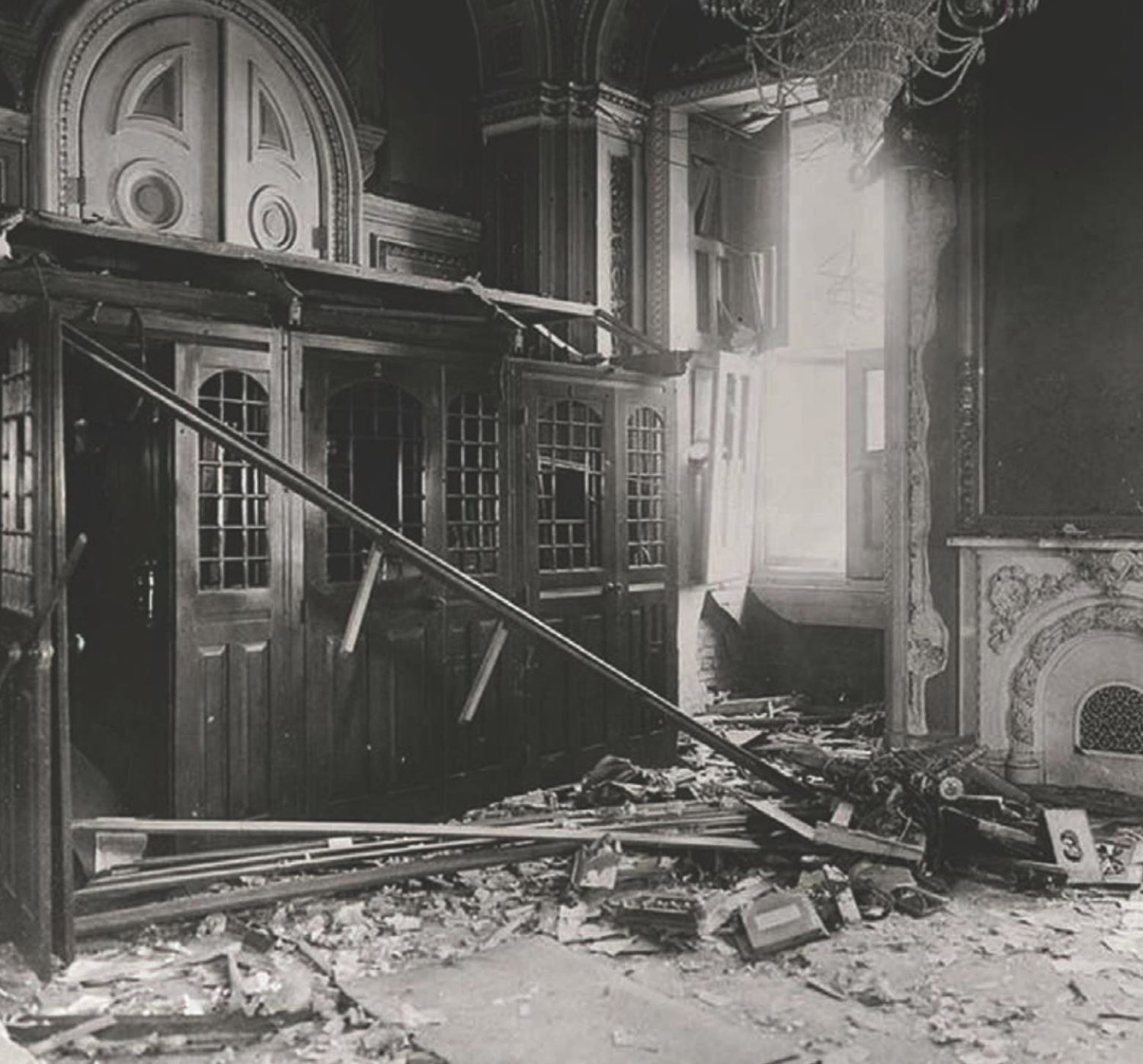The US Capitol building’s bloody past
A mericans like to think of the United States Capitol as set apart from the rest of life, a place where passions are put aside in favor of calm, deliberative reason, where legislators work together …
This item is available in full to subscribers.
Subscribe to continue reading. Already a subscriber? Sign in
Get 50% of all subscriptions for a limited time. Subscribe today.
Please log in to continueNeed an account?
|
The US Capitol building’s bloody past
Americans like to think of the United States Capitol as set apart from the rest of life, a place where passions are put aside in favor of calm, deliberative reason, where legislators work together for the common good. So the country was horrified last week to see the historic structure desecrated by demonstrators who forced congressmen and senators to seek shelter.
But our ideal is at odds with the building’s bloody legacy. In fact, it was still under construction when British troops hit the place during the War of 1812. They torched the structure, also destroying the U.S. Supreme Court and the Library of Congress (which Thomas Jefferson had started by donating his personal library), both of which were housed there. Only a violent thunderstorm’s arrival put out the flames, thus sparing the original walls, which are incorporated in today’s building.
Just 21 years later, it was the site of the first known presidential assassination attempt. Andrew Jackson was leaving a congressional funeral service held there when a deranged house painter fired two pistols at him. Both guns misfired. Old Hickory was unhurt; the painter was later declared insane and spent the rest of his life in mental institutions. (Jackson’s supporters had caused a melee of their own during his first inauguration festivities nearly six years earlier, when their whiskeydrenched partying trashed the White House interior.)
Fast forward to 1856, when the longer-simmering dispute over slavery in the runup to the Civil War reached the Senate floor. After Massachusetts Senator Charles Sumner attacked an elderly Southern colleague during a heated speech, that senator’s younger cousin—South Carolina Congressman Preston Brooks—savagely beat Summer with a cane as he sat at his desk in the Senate chamber. The attack was so violent, Summer took three years to recover from his injuries.
An explosion rocked the Senate side of the Capitol on the Fourth of July weekend in 1915. Nobody was hurt, though a chandelier was blown to pieces and doors were ripped open, including one leading the vice president’s office. A former Harvard professor planted three sticks of dynamite in the Senate Reception Room, which he claimed was a protest of U.S. bankers loaning money to Britain during the early part of World War I, despite America’s proclaimed neutrality. The bomber later committed suicide in jail.
The next round of violence was especially terrifying. In 1954, four terrorists seeking Puerto Rico’s independence randomly fired 30 rounds into the House chamber from the visitors’ gallery. Five Members of Congress sustained non-life-threatening wounds. If you know where to look, you can still see signs of damage caused by the gunfire today.
Another bombing, this time by the radical Weather Underground, caused extensive damage when it detonated in a Senate side bathroom in 1971. No one was hurt.
And a third bomb exploded underneath a bench outside the Senate Chamber in November 1983, rattling nerves and causing minor damage. An extremist group called the Armed Resistance Unit said it planted the bomb to protest American military action in Grenada and Lebanon. Once again, there were no injuries.
But it was far different story in 1998, when an armed man rushed through a security station. In the exchange of gunfire that followed, the assailant and two Capitol Police officers were killed. Officers Jacob Chestnut, Jr. and John Gibson became the first private citizens to lie in honor inside the Rotunda.
Ironically, what might have been the greatest act of violence targeting the Capitol Building didn’t happen. It is widely believed the hijacked United Flight 93 was intending to be used in a suicide attack on the Capitol, until passengers forced it to crash into a Pennsylvania field on September 11, 2001.
Now, another ugly incident is added to the Capitol’s long litany as a venue for violence. However, those who seek to abuse the historic structure would do well to recall the late Senator Edward Kennedy’s words: “Violence is an admission that one’s ideas and goals cannot prevail on their own merits.”
Have comments, questions or suggestions you’d like to share with Mark? Message him at jmp.press@gmail.com.
Other items that may interest you










Comments
No comments on this item Please log in to comment by clicking here